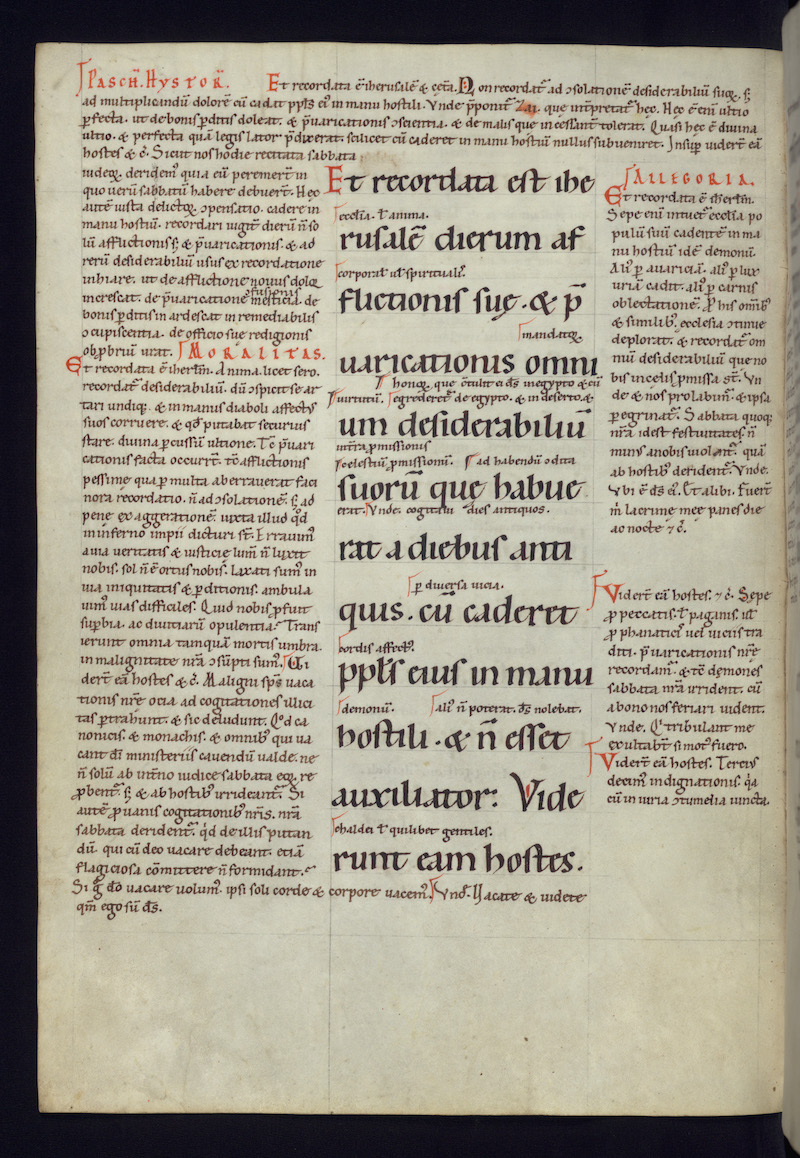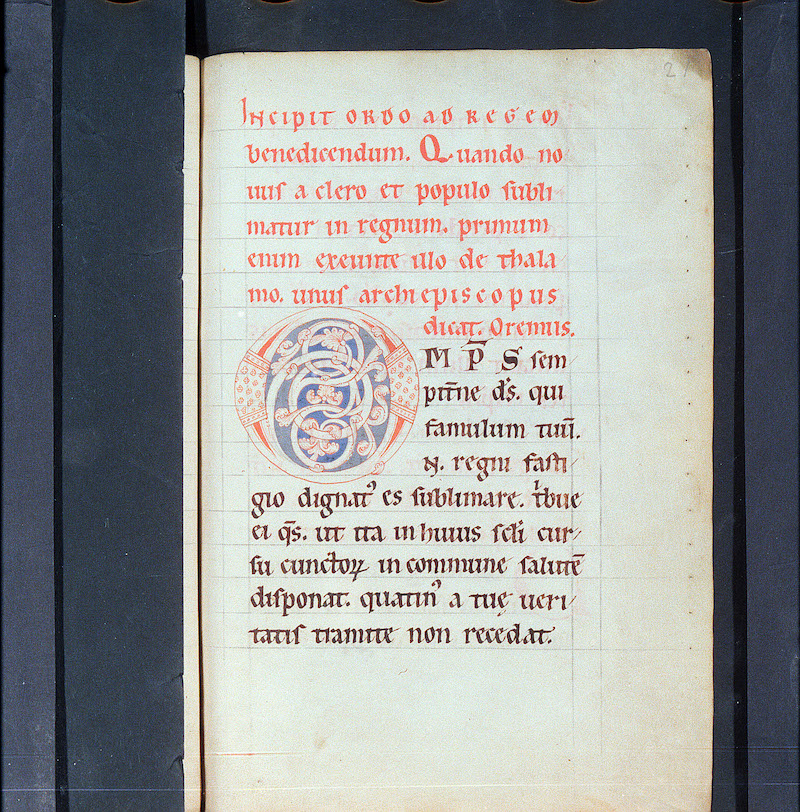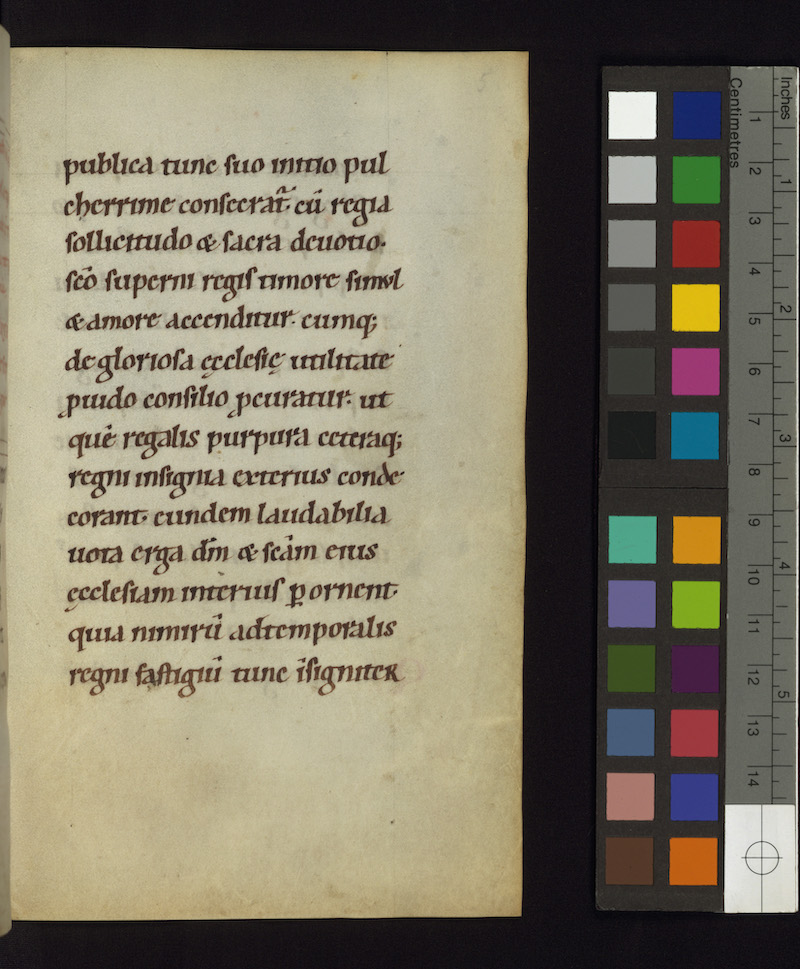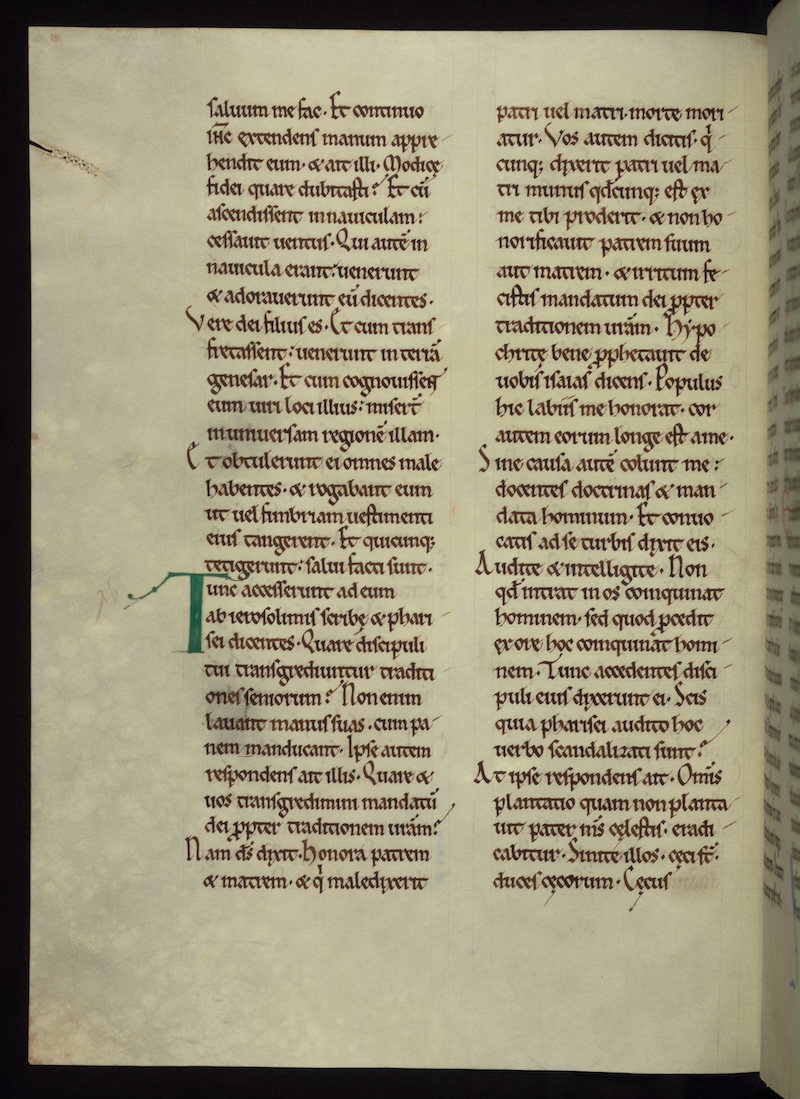
Serto, 9th century (?)
-
Title
Canons -
Text
Canons from the Council of Laodicea -
Language(s)
Syriac -
Writing System
Syriac -
Script(s)
Serto -
Country
Turkey -
City
Mardin -
Repository
Church of the Forty Martyrs -
Shelf Mark
CFMM 00310, page 75 -
Century
9th century (?) -
Year Range
800-900 -
Provenance
Seal for Dayr al-Zaʿfarān on pages 19 and 397; purchase note on page138 in Arabic, the purchaser a certain Rabbān Isṭifānūs… (?) in the year 1839 AG (= 1527/8 CE); possession note in Garšūnī for Dayr al-Zaʿfarān on page 386 -
Bibliography
The Greek text of the Canons from the Council of Laodicea (second half of the fourth century), are in Mansi, Sacrorum conciliorum nova amplissima collectio, vol. 2 (1759), 563-594, and Hefele, Histoire des conciles, vol. 1.2 (1907), 989-1028.
430 pages (modern pagination in pencil) on parchment. 1 column, 25 lines per page; support dimensions 21.5 x 16 cm
Imperfect: wanting beginning and end leaves; additional folios wanting within main book block (Compare the later note ناقص ورقة on page 12 and 402); general wear to leaves does not effect text; tears to pages 171-180.
Greek words likely supplied by the same scribe: ΛΑΟΔΙΚΕΙΑ, page 69; ΧΑΡΚΗΔΩΝ (sic!) for Καρχηδών, that is with Κ and Χ switched; ΑΦΡΙΚΗ, page 137. Later Syriac note in Estrangela on page 137: “He gazed [or I gaze] into this book, holy and full of life, the book of the canons of the 318 fathers who gathered at Nicaea. May their prayer be with us! Amen.”
Acknowledgements: Described by Adam McCollum
Transcription
Transcription of left-hand (recto) page:
01 ܒܟܘ̈ܟܒܐ܇ ܐܘ ܕܢܥܒܕܘܢ ܗܠܝܢ ܕܡܬܐܡܪܝܢ
02 ܦܘܠܩܛܝܪ̈ܝܐ ܐܘ ܟܝܬ ܡܢܛܪ̈ܢܐ܇ ܗܠܝܢ //ܩܡ̈ܝܥܐ\\
03 ܟܝܬ ܕܐܝܬܝܗܝܢ ܐܣܘܪ̈ܐ ܕܢܦܫ̈ܬܐ ܕܝܠܗܘܢ.
04 ܗ݁ܢܘܢ ܕܝܢ ܕܛܥܝܢܝܢ ܡܢܗܘܢ ܥܠܝܗܘܢ܃
05 ܐܘ ܣܟ ܡܬܚܫܚܝܢ ܒܗܘܢ. ܕܢܫܬܕܘܢ
06 //ܠܙ\\ ܡܢ ܥܕܬܐ ܦܩ̣ܕܢܢ܀ ܕܠܐ ܙܕܩ̇ ܕܡܢ
07 ܝܗܘ̈ܕܝܐ ܦܛܝܪ̈ܐ ܠܡܣܒ܇ ܐܘ ܕܢܫܬܘܬܦ
08 //ܠܚ\\ ܒܪ̈ܘܫܥܝܗܘܢ܀ ܕܠܐ ܙܕܩ̇ ܕܡܢ ܝܗ̈ܘܕܝܐ
09 ܐܘ ܡܢ ܐܪ̈ܛܝܩܘ̇. ܗܠܝܢ ܕܡܫܬܕܪ̈ܢ ܡܢܗܘܢ
10 ܒܥܐܕܐ ܠܡܣܒ. ܐܦܠܐ ܕܐܟܚܕܐ ܥܡܗܘܢ
11 //ܠܛ\\ ܢܥܕܥܕ܀ ܕܠܐ ܙܕܩ̇ ܕܥܡ ܚܢ̈ܦܐ ܐܝܟ
12 ܚܕܐ ܠܡܥܕܥܕܘ܇ ܘܠܡܫܬܘܬܦܘ ܒܠܐ
13 //ܡ\\ ܐܠܗܘܬܗܘܢ܀ ܕܠܐ ܙܕܩ̇ ܕܐܦܝܣ̈ܩܘܦܐ
14 ܟܕ ܡܬܩܪܝܢ ܠܣܘܢܘܕܘܣ ܢܒ̇ܣܪܘܢ.
15 ܐܠܐ ܕܢܐܙܠܘܢ ܘܢܠܦܘܢ܉ ܐܘ ܢܐܠܦܘܢ ܐܝܟ
16 ܕܠܬܘܪܨܐ ܕܥܕܬܐ ܘܕܗܠܝܢ ܕܫܪܟܐ.
17 ܐܢ ܕܝܢ ܢܒ̇ܣܪ ܐܢܫ܉ ܗ̇ܘ ܕܐܝܟ ܗܟܢ܉
18 ܒܢܦܫܗ ܢܬܥ̇ܕܠ. ܣܛܪ ܡܢ ܗ̇ܝ
19 //ܡܐ\\ ܕܐܢ ܡܛܠ ܟܘܪܗܢܐ ܢܦܘܫ܀ ܕܠܐ ܙܕܩ̇
20 ܕܟܗܢܐ ܐܘ ܩܠܝܪܝܩܐ܇ ܒܠܥܕ ܦܘܩܕܢܐ
21 //ܡܒ\\ ܕܐܦܝܣܩܘܦܐ ܢܐܙܠ ܒܐܘܪܚܐ܀ ܕܠܐ
22 ܙܕܩ̇ ܕܟܗܢܐ ܐܘ ܩܠܝܪܝܩܐ܇ ܒܠܥܕ
23 ܟܬܝ̈ܒܬܐ ܩܢ̈ܘܢܝܬܐ ܢܐܙܠ ܒܐܘܪܚܐ܀
24 //ܡܓ\\ ܕܠܐ ܙܕܩ̇ ܕܗܘܦܝܛܪ̈ܐ ܐܦܢ ܩܠܝܠ
25 ܢܫܒ̣ܩܘܢ ܬܪ̈ܥܐ ܘܢܬܥ̣ܢܘܢ ܒܨܠܘܬܐ܀
Paleographic Features
The script is predominantly Serṭo, but with some letters more angular, as in Esṭrangela. Such mixing of script-types in other manuscripts of the period, such as CFMM 356, SMMJ 24, 36, 51. Here the letters that appear more as in Esṭrangela are: bēt, ṭēt, (final) lāmad, mim, qop, and šin. The wāw (always closed) is sometimes connected to the following letter (e.g., on the left-hand page, line 19 for nephūš, but not for qānonāyātā in line 23).
Diacritical Points
The page is not vocalized, but there are diacritical points (super-dots and sub-dots). In addition to the frequently appearing zādeq, which is marked each time with a super-dot on the qop, note the following:
line 4: hānon (super-dot)
line 5: d-neštdun (sub-dot)
line 6: pqadnan (or paqqednan) (sub-dot)
line 9: arēṭiqo (super-dot)
line 14: nbassrun (super-dot)
line 17: nbassar (super-dot), haw (super-dot)
line 18: netʿaddal (super-dot), hāy (super-dot)
line 25: nešbqon (sub-dot)
The super-dots thus mark the active participle or a following a-vowel, and the sub-dots mark the perfect or a non-a-vowel.
Marginalia
The individual canons, separated by the four-dot diamond, are numbered in the margins with rubricated Syriac letters, here nos. 37-43.
In many places the scribe has written in the margin alternatives to certain words in the text, such as sunqānā for ʿelltā (page 52) and tbāʿtā for dinā (page 53). Here there is a marginal reading qmiʿē for pulaqṭēriyē (< φυλακτήρια). The scribal marginalia are keyed to the main text by means of a tilde-like line above the relevant words, both textual and marginal. There are also later marginalia, e.g. page. 53: “Pray for the sinner…,” ; page 55: "In the name of the Lord."
The four-dot diamonds are generally rubricated; those in lines 19 and 23 are of a different shape, with a connecting bar between the two horizontal dots. In line 21, after the diamond, the scribe has inserted a place-taking line before writing d-lā.



